Summary of Climate Disasters on the Planet from October 30 to November 5, 2024
Spain
Destructive forces of nature continue to ravage Spain, spreading to new regions. As of November 6, 217 people died, with another 89 reported missing. Over 21,400 homes and 12,000 commercial properties were impacted. A total of 44,000 vehicles are either beyond repair or have sustained damage.
While search efforts for victims in homes, parking lots, and among twisted piles of cars continue in Valencia, heavy rains have persisted and shifted to the northeastern part of the country.
From October 30 to 31, the municipality of Beceite, in the Matarraña region of the Teruel province in the autonomous community of Aragon, experienced its heaviest rainfall in 24 years, with over 330 mm (13 inches) recorded.
On November 1, a storm struck the island of Mallorca, inundating streets in the municipality of Calvià and causing landslides in some areas. The Sierra de Alfábia region received 102 mm (4 inches) of rainfall.
On November 4, heavy rains struck Catalonia. In the city of Barcelona, nearly 150 mm (6 inches) of rain fell within three hours—more than two months' worth of precipitation (the average monthly total for November is about 60 mm (2.4 inches)).

Record-breaking downpour floods the streets of Barcelona, Spain
The record rainfall caused severe flooding, disrupting train services and other transportation systems. At Barcelona-El Prat Airport, 70 flights were canceled, and another 17 were rerouted to different airports. Water streamed from the ceiling in the terminal, and passengers waded through ankle-deep water to reach boarding gates.
Barcelona also experienced a significant hailstorm, worsening the aftermath of the disaster.
In the province of Tarragona, a red alert was declared. On the C-32 highway, cars were partially submerged by floodwaters.
Indonesia
The powerful eruption of the Lewotobi volcano on Flores Island, Indonesia, resulted in at least 9 fatalities and 64 injuries as of November 4, with half of the injured in critical condition.
The explosive activity began on October 31 and was accompanied by numerous earthquakes. According to geological agencies, 138 volcanic earthquakes were recorded on November 1 and 2. Late on the night of November 1, a powerful lava fountain erupted, accompanied by volcanic lightning.
The deadly eruption of Lewotobi occurred during the night of November 3-4 while residents were asleep. According to the Center for Volcanology and Geological Hazard Mitigation (PVMBG), the first eruption occurred at 11:57 PM, followed by a second at 1:27 AM local time.
Red-hot boulders, gravel, and ash were flung 6 km (3.7 miles) from the crater, covering nearby villages with tons of volcanic debris. Seven nearby villages suffered severe damage. For two hours, falling debris smashed through roofs and ignited fires, prompting panic-stricken residents to flee.
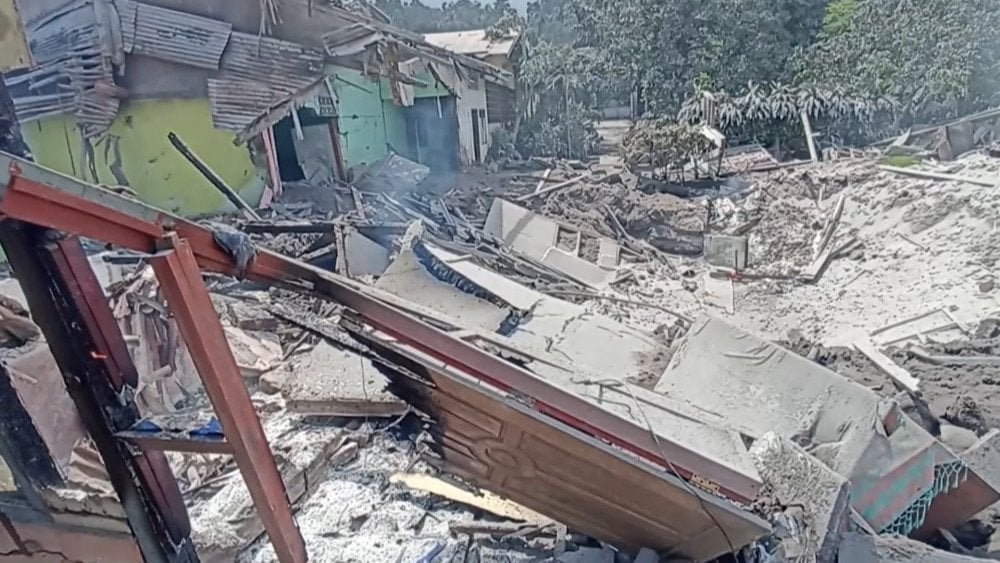
Aftermath of the Lewotobi Volcano Eruption, Indonesia
The volcano spewed an ash cloud reaching over 12 km (7.5 miles) above sea level. Four airports on Flores Island temporarily ceased operations. All activities within a seven-kilometer radius (4.3 miles) of the volcano were prohibited.
The highest level of danger was declared for the region.
Israel
In early November, severe storms struck Israel, causing flash floods, landslides, and large hail in the northern part of the country.
In the city of Karmiel, hailstones the size of ping-pong balls pelted the area for 20 minutes, causing extensive damage to solar panels and vehicles.
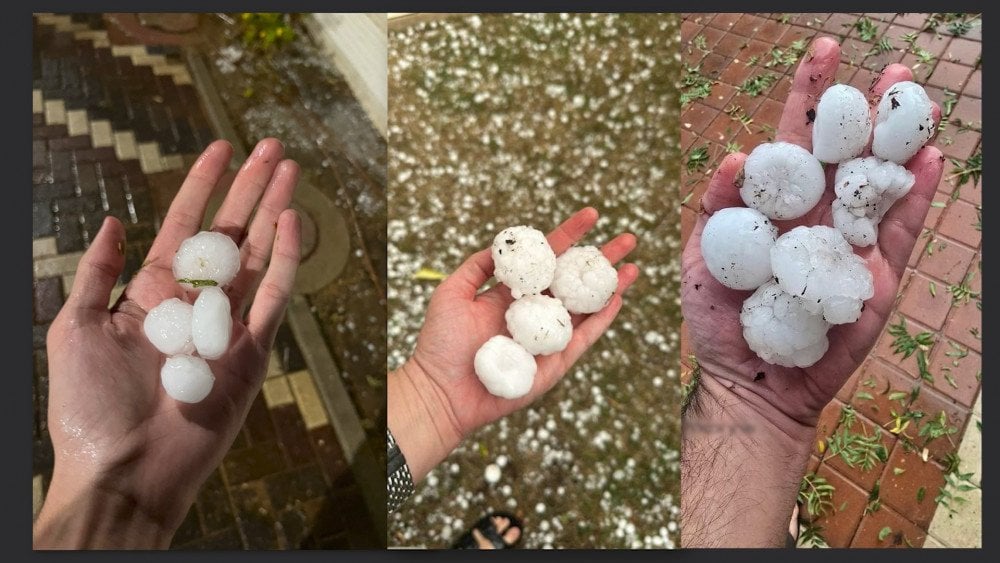
Large hailstones fell in Karmiel, Israel
In an industrial area in Mashgav, ceilings collapsed in offices while rainwater flooded buildings.
In the Judean Desert, heavy rainfall led to a surge of water in the Nahal Darga canyon, prompting the closure of Ein Gedi and Nahal Bokek nature reserves to tourists.
USA
During the night of November 3, powerful thunderstorms and at least five tornadoes struck central and southern Oklahoma, including Oklahoma City and Newcastle.
A state of emergency was declared in six counties.
In Newcastle, a school roof was torn off, and in Oklahoma City, tornadoes flipped vehicles and destroyed dozens of buildings. Over 20,000 residents were left without power, and 11 people were hospitalized due to injuries.

Aftermath of Tornadoes in Oklahoma City, USA
It is noteworthy that severe thunderstorms and tornadoes typically occur in spring and summer. Thus, a surge of powerful tornadoes in November—especially after midnight—is extremely rare. Studies indicate that nighttime tornadoes are more than twice as deadly as those occurring during daylight hours.
Russia
On November 1, Cyclone Martina, after striking countries on the Scandinavian Peninsula, reached the Kaliningrad region of Russia. Coastal winds with gusts up to 27 m/s (60 mph) uprooted dozens of trees, scattered garbage bins, damaged vehicles, and left entire neighborhoods without electricity.
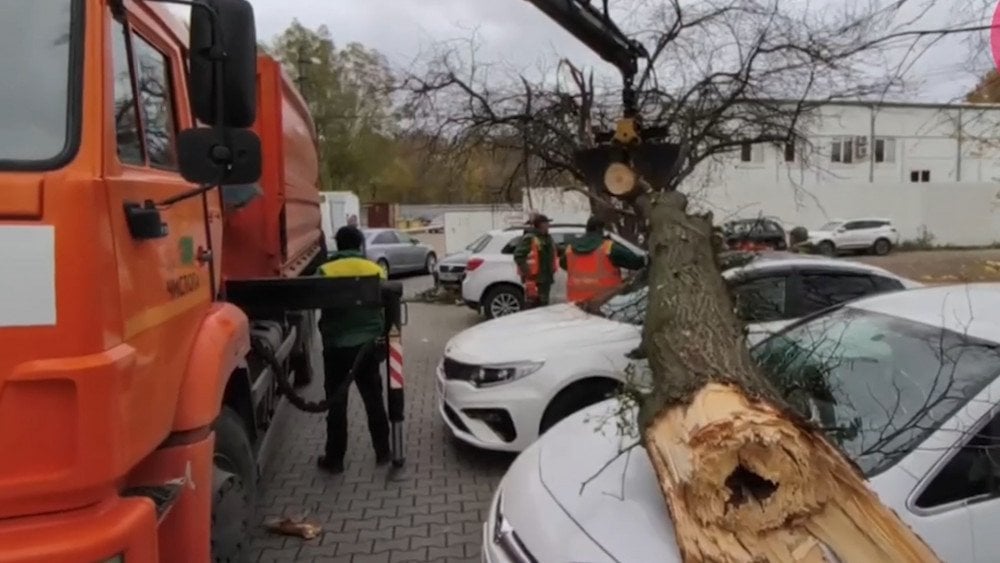
A fallen tree damaged vehicles in the Kaliningrad region, Russia
At Khrabrovo Airport, flights were delayed, and the movement of all ships, including ferries, was suspended in the port of Baltiysk.
The cyclone then moved inland. Moscow experienced heavy rainfall, squally winds, and a sharp drop in atmospheric pressure. On November 2, the pressure fell to 720.1 mmHg, approaching a record low. At Vnukovo Airport, 29 mm (1.1 inches) of rain fell, exceeding half the monthly norm for November (the November average is 53 mm (2 inches)).
Residents of the Lotoshino and Ruza districts in Moscow Oblast shared videos on social media showing the destructive aftermath of the storm: numerous fallen trees and two roofs torn from residential buildings were thrown about (328 feet) from buildings, indicating extremely strong gusts of wind.
Experts described the event as a microburst.
A microburst is also called a micro-squall or micro-explosion.
Recently we reported on the increasing frequency of these dangerous phenomena, particularly in Costa Rica and Brazil.
On November 1, thunderstorms and large hail were reported in Samara and Moscow regions—an unusual event for late autumn in this area.
In Tver Oblast and Perm Krai, hurricane-force winds combined with snowfall disrupted power supplies.
Yekaterinburg and its surroundings were blanketed with snow, while roads were coated in ice. Strong winds with speeds of up to 28 m/s (62 mph) pushed even large vehicles into roadside ditches.

A car slid into a ditch due to strong winds and icy roads in Yekaterinburg, Russia
Over three days two powerful storms hit Pskov and Novgorod regions. Energy crews worked to clear roads and power lines of fallen trees.
In European countries, Cyclone Martina was referred to as Storm Jakob and affected Norway, Sweden, Finland, Lithuania, Latvia, Estonia, and Belarus.
Lightning
On November 3, severe thunderstorms with deadly lightning struck northern Uganda. In the Palabek refugee settlement, Lamwo District, lightning hit a group of people, resulting in 14 deaths and 34 injuries.
On the same day, a similar incident occurred in Peru. During a soccer match at the Coto Coto stadium in Huancayo, Junín Department, a severe thunderstorm began, prompting officials to stop the game so players and spectators could seek shelter. However, just ten seconds after the match was stopped, lightning struck the field, hitting one player who died instantly. Seven other players were injured, four of whom were hospitalized.
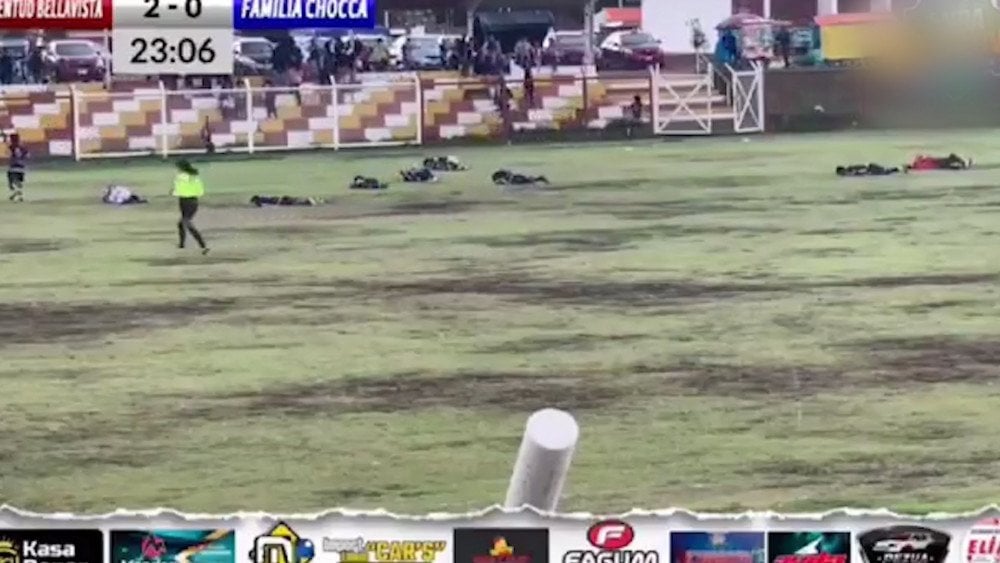
Tragedy at the Coto Coto stadium in Huancayo, Junín Department, Peru
The incident shocked the local community and raised concerns about the safety of sporting events during severe weather conditions.
Saudi Arabia
From October 30 onwards, large hailstones bombarded the deserts of Saudi Arabia in Al Jawf, Northern Borders, Riyadh, and Mecca regions.
The hail was accompanied by severe thunderstorms, causing power outages, flooding valleys, and a sharp temperature drop in affected areas.
This region has recently seen frequent flash floods and hail drifts, making it increasingly difficult to classify it as a desert.
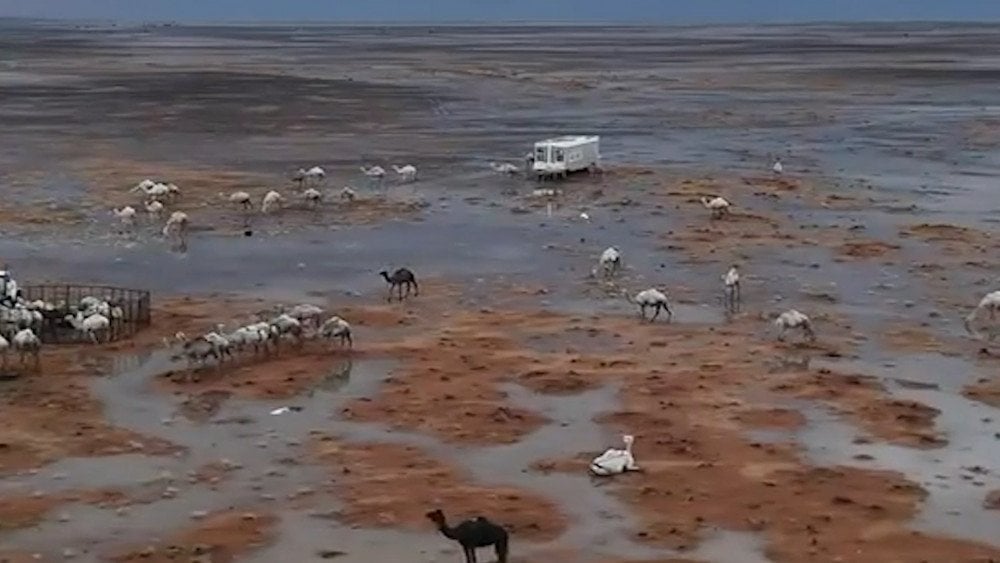
The flooded desert of Saudi Arabia
Iraq
Heavy rains that began on October 31 paralyzed Iraq, disrupting normal daily life. Baghdad was at the center of this disaster: schools and offices were closed, and streets and homes were flooded. Water rose to window levels in some areas, forcing residents to leave their homes. Social media footage from low-lying areas showed roads submerged and vehicles abandoned on flooded streets.
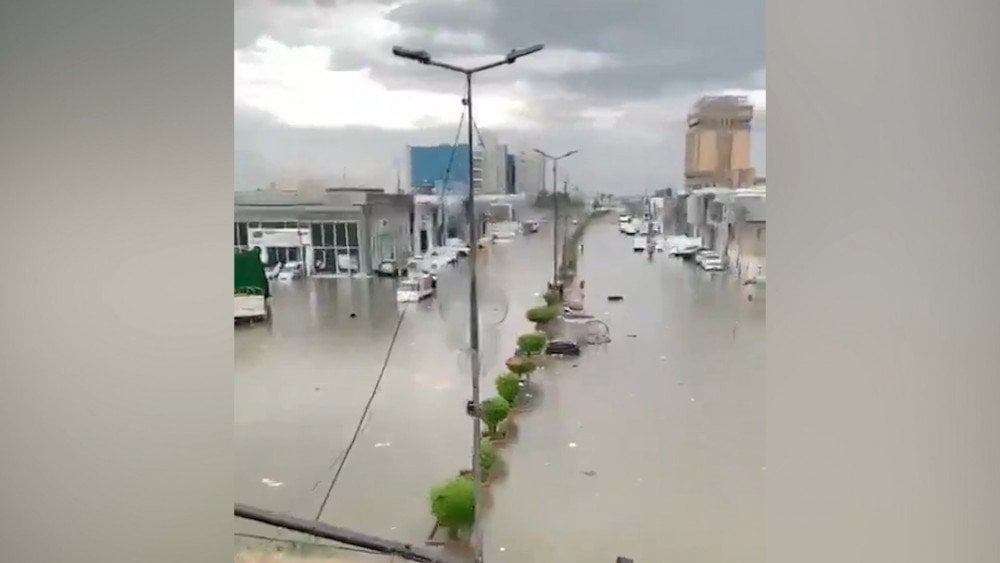
Streets of Baghdad after severe rain, Iraq
Syria
Severe rains in northern and eastern Syria flooded valleys, with water levels rising significantly in various areas. Storm winds and rain caused internet and power outages.
In the city of Al-Hasakah, in the Al-Jazira province, 35 mm (1.4 inches) of rain fell, representing 1.5 times the monthly average (the November average is 20 mm (0.8 inches)).
Water and mud inundated yards and shops in Raqqa, resulting in the death of poultry.
The situation in Aleppo and Idlib was even more concerning. Here, heavy floods inundated residential areas, schools, and roads, causing damage to refugee camps.
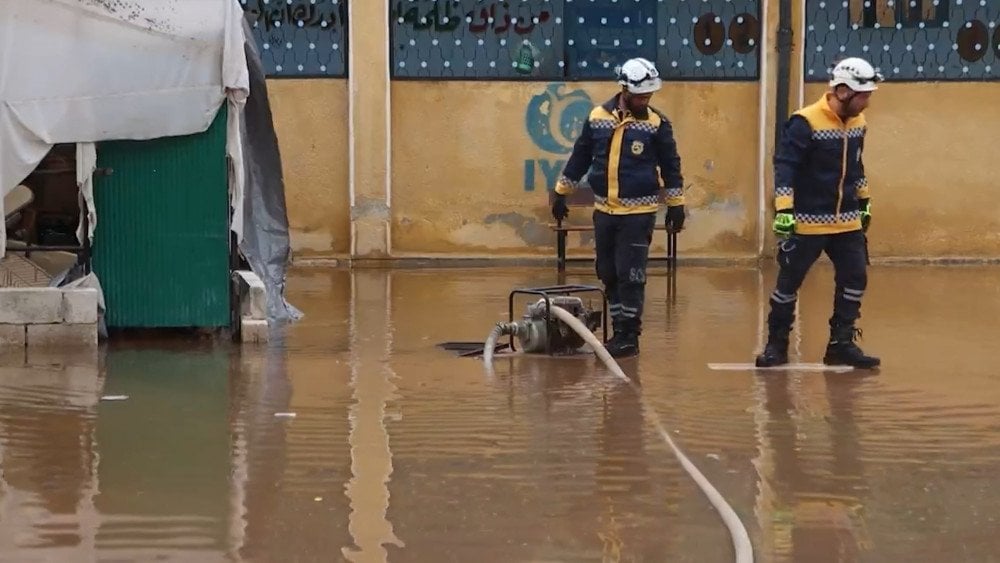
Emergency services work to manage flood aftermath, Syria
Super Typhoon Kong-rey
On October 31, Super Typhoon Kong-rey made landfall on Taiwan’s coast, striking Taitung County. It brought fierce winds with gusts over 260 km/h (162 mph) and torrential rain.
In Hualien County, 119.5 mm (4.7 inches) of rain fell within an hour, totaling over 300 mm (12 inches) for the day. Streets in Taipei and other cities were flooded. The typhoon generated massive waves in the Taiwan Strait.
A total of 11,900 people were preemptively evacuated from hazardous areas. Kong-rey claimed three lives and left 692 people injured.
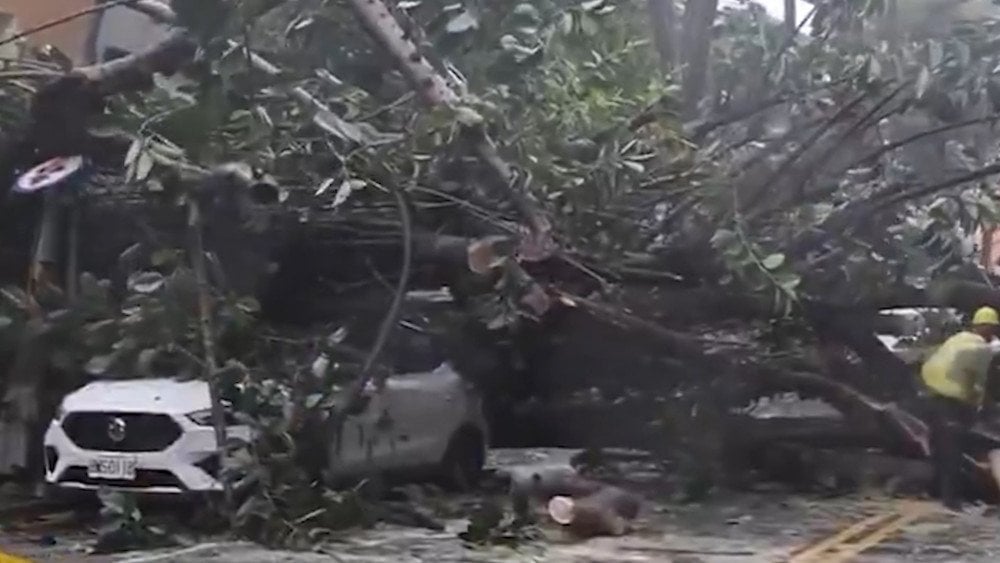
Super Typhoon Kong-rey caused significant destruction on Taiwan
According to Taiwan’s Ministry of Economic Affairs, over 970,000 households across the island lost power, and more than 44,000 homes were left without water.
Farmers in Taiwan also suffered heavy losses. Rice, garlic, corn, onions, and the local fruit known as “sugar apple” were the hardest-hit crops. Agricultural losses are estimated at $8.86 million.
All domestic and 314 international flights were canceled, and many roads were blocked by landslides. At the Qingshui Cliffs, a landslide nearly buried the entrance to a nearby tunnel.

A landslide blocked the tunnel entrance, Taiwan
Train services on certain sections were halted due to a 4.7 magnitude earthquake that occurred near Hualien County at 12:18 AM on November 1, according to the China Earthquake Networks Centre. The earthquake’s epicenter was about 13 km (8 miles) from Taiwan at a depth of 25 km (15.5 miles).
Kong-rey became the largest typhoon to hit Taiwan since 1996. The radius of maximum winds—meaning the distance between the typhoon’s center and the band of its strongest winds—reached 320 km (199 miles). On average, for large typhoons, hurricane-force winds can extend more than 240 km (149 miles). This is the first time in recorded history that such a powerful typhoon hit the island after mid-October.
After impacting Taiwan, Kong-rey moved towards China’s eastern coast where it triggered unprecedented rains. Zhejiang Province and Shanghai broke rainfall records.
On November 1, the Linhai station in Zhejiang Province recorded 216.3 mm (8.5 inches) of rain in 24 hours (a record since 1997), while Pudong Huinan station in Shanghai recorded 242.8 mm (9.6 inches) (a record since 2006).
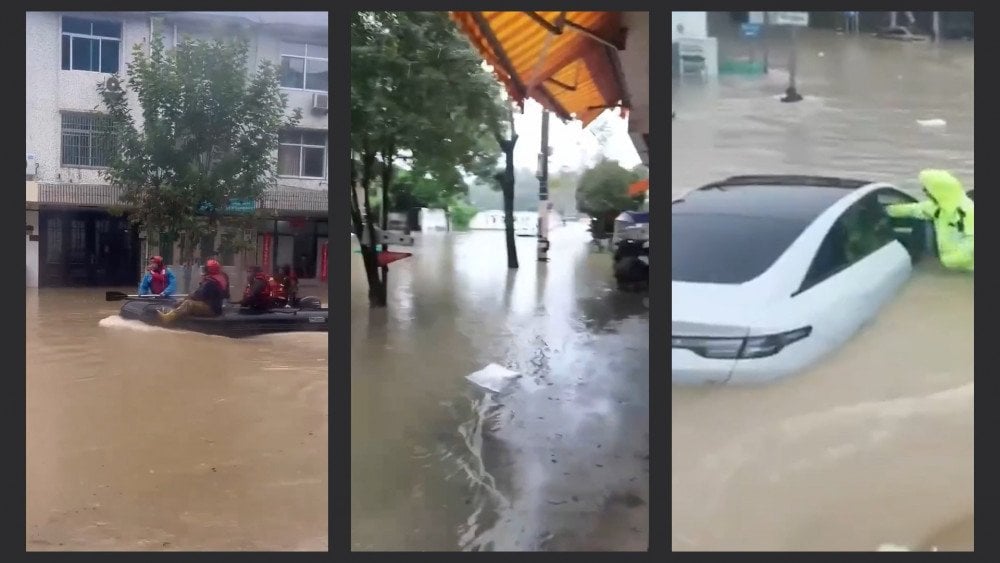
Flooding caused by Super Typhoon Kong-rey, China
The remnants of the typhoon also brought heavy rains to South Korea and Japan.
On November 1, 268.5 mm (10.6 inches) of rain fell near Hallasan Volcano on Jeju Island, South Korea, flooding buildings across the island.
In Japan, the heavy rains halted high-speed trains on the entire Tokaido Shinkansen line between Tokyo and Shin-Osaka.
On November 2, 223 weather stations across Japan recorded monthly rainfall records.
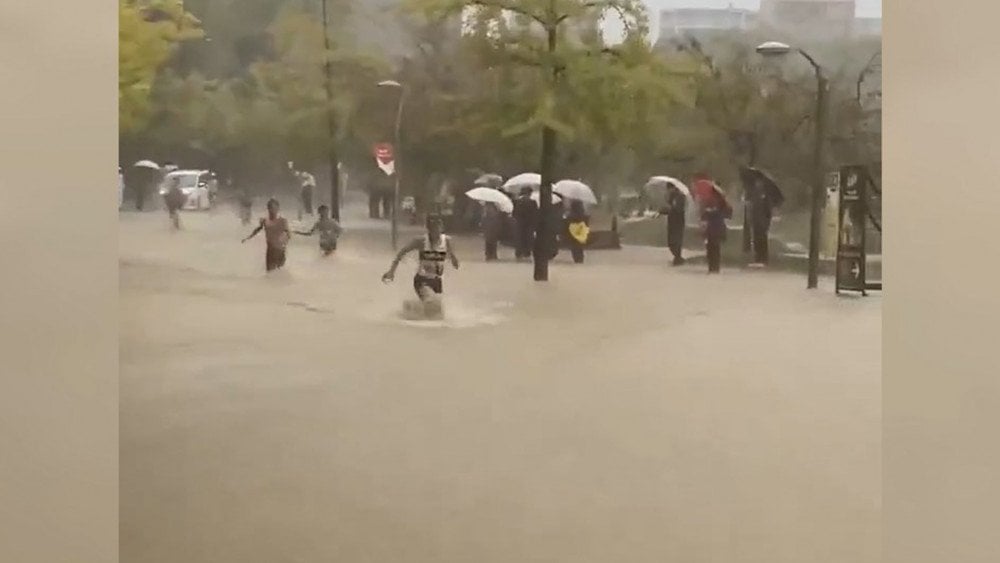
Record-breaking rainfall flooded streets in Japan
In the Takagoe district of Hirado, Nagasaki Prefecture, trees and rocks blocked roads, making them impassable. A local resident commented that it was frightening since landslides had never occurred in this area before. Some regions experienced unprecedented rainfall intensity.
Today it is evident that humanity must prepare for significant challenges posed by nature. This involves implementing measures for overall safety.
A unified disaster monitoring center, gathering data from around the world, is essential. Alert systems must ensure that everyone receives timely warnings and safety instructions. Prepared evacuation centers with autonomous supplies and advanced rescue technology will be key in mitigating the aftermath.
Yet, even if these emergency response measures are implemented, they may not be sufficient.
Imagine if floods similar to the recent tragedy in Spain simultaneously impacted dozens of countries worldwide. Humanity would face overwhelming losses beyond its capacity to manage.
Therefore, global action is required to minimize and even halt the escalation of natural disasters. We have no choice but to seek a solution.
This is where science steps in. An international group of scientists has already proposed initial solutions to the climate crisis and conducted basic research, but their efforts alone are not enough. To effectively confront this threat requires uniting global scientific potential by engaging top specialists and research institutions toward a common goal—preserving humanity.
Establishing such a Unified Scientific Center is possible only if there is political will—a will that can emerge only when people begin discussing this issue widely and create a collective global demand for action.
We do not know if this will happen or not, but as long as we see a chance, we'll take it. We will be glad to do it together.
Watch the video version of this article here:
Leave a comment